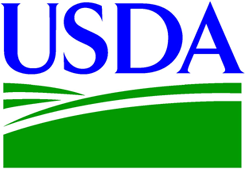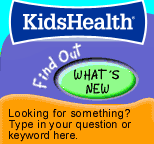The Food Guide Pyramid WebQuest
Introduction | Task | Resources | Process | Evaluation | Conclusion
The human body needs food to function properly. The U.S. Department of Agriculture (USDA) Food Guide Pyramid is one way for people to understand how to eat healthy. The Food Guide Pyramid icon (shown below) represents the recommended portion of foods from each food group a person should eat each day. A rainbow of colored, vertical stripes represents the five food groups, plus fats and oils. The orange stripe represents grains, the green represents vegetables, the red represents fruits, the yellow represents fats and oils, the blue represents milk and dairy products, and the purple represents meat, beans, fish and nuts. The stairs on the pyramid represent the importance of exercise. A balanced diet is one that includes all the food groups. In other words, a healthy, balanced diet should include foods from every color of the Food Guide Pyramid, every day.
To identify the food categories used in the USDA Food Guide Pyramid and to chart the foods eaten during one day and describe how well they adhere to the Food Guide Pyramid.
 |
USDA - The U.S. Department of Agriculture - The Center for Nutrition Policy and Promotion, an organization of the U.S. Department of Agriculture, was established in 1994 to improve the nutrition and well -being of Americans. Click the different parts of the pyramid to learn more about each of the Food Guide Pyramid's food groups. |
 |
KidsHealth - Created by The Nemours Foundation's Center For Children's Health Media, KidsHealth provies doctor-approved health information about children. Read this website to learn about serving sizes, or in other words, how much of each food group you need to eat for a healthy diet. |
 |
MyPyramid Blast Off Game - An interactive computer game where kids can reach Planet Power by fueling their rocket with food and physical activity. "Fuel" tanks for each food group will help you keep track of how your food choices fit into the Food Guide Pyramid. |
- Visit and explore the web sites listed.
- Play the MyPyramid Blast Off Game.
- List the different food groups that make up the Food Guide Pyramid and list at least five foods that fit into each food group.
- Fill out the MyPyramid Worksheet to chart the foods you ate during one full day. Refer to the KidsHealth website for serving size help.
- Use the information from the MyPyramid Worksheet to write one paragraph (at least 5 sentences) describing how well your diet adheres to the Food Guide Pyramid.
- Create a healthy menu for one day that meets the Food Guide Pyramid guidelines; include one meal for breakfast, one meal for lunch, and one meal for dinner.
- The student listed the different food groups that make up the Food Guide Pyramid and listed at least five foods that fit into each group (5 points).
- The student filled out the MyPyramid Worksheet based on one full day and wrote one paragraph describing their findings (5 points).
- The student created a healthy menu for one day that meets the Food Pyramid guidelines (5 points).
- NOTE: Students will be given 5 points for each completed assignment. If an assignment is not fully complete (for example the paragraph is less than 5 sentences or the menu only includes one or two meals), they will receive half credit. If an assignment is not done, 5 points will be lost for that particular assignment. Points will not be taken off for spelling and/or grammer, but try your hardest.
You have visited and explored three web sites that focus on the Food Guide Pyramid. Other web sites such as Nutrition Explorations and Kids World offer nutrition information, activities, contests and recipes. Find out more about the Food Guide Pyramid and the ways you can achieve and/or maintain a healthy, balanced diet.
By Kara Kantrowitz
E-mail me
July 25, 2006
Food Guide Pyramid Picture from Mypyramid.gov.
